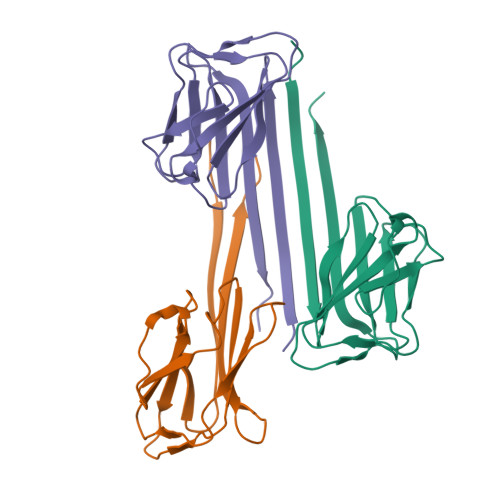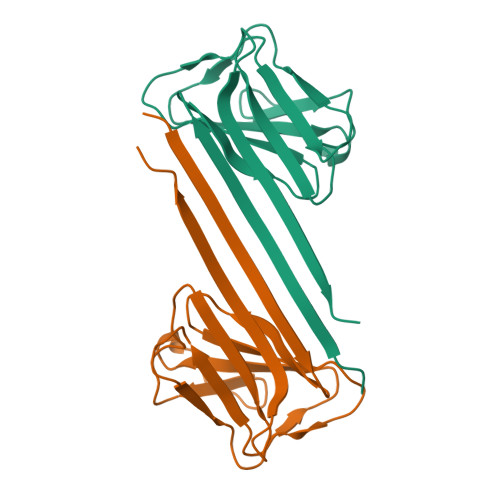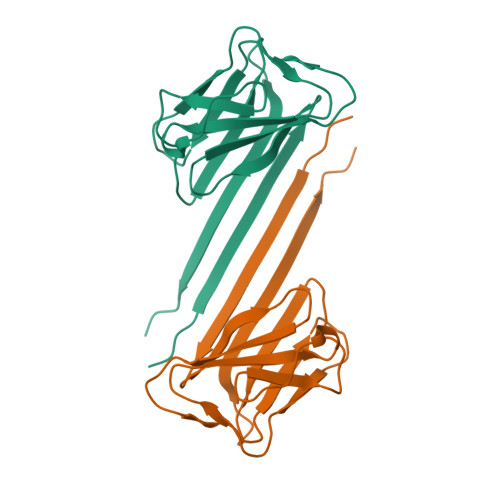Beta-strand-mediated dimeric formation of the Ig-like domains of human lamin A/C and B1.
Ahn, J., Lee, J., Jeong, S., Kang, S.M., Park, B.J., Ha, N.C.(2021) Biochem Biophys Res Commun 550: 191-196
- PubMed: 33706103
- DOI: https://doi.org/10.1016/j.bbrc.2021.02.102
- Primary Citation of Related Structures:
7CRG, 7DTG - PubMed Abstract:
Lamins are nuclear intermediate filament proteins that play an essential role in maintaining the nuclear structure by forming a 3-D meshwork. Lamins consist of the N-terminal unstructured head, the coiled-coil rod domain, and the C-terminal tail, which is mostly unstructured except for the Ig-like domain. To date, the Ig-like domain has been characterized as a monomeric structure. Here, we determined the crystal structures of human lamin A/C, including the Ig-like domain and its N- and C-terminal flanking sequences. Interestingly, the structures showed a homodimer formed by beta-strand interactions between the N- and C-terminal flanking sequences. This interaction also provides a molecular implication for the creation of a 3-D meshwork between the 3.5-nm-thick filaments. Furthermore, we determined the crystal structure of the corresponding region of lamin B1. The structure showed a similar dimeric assembly, also formed by beta-strand interactions, albeit the intersubunit distance was much shorter. Since the Ig-like domain contains many genetic hotspots causing lamin-related diseases in lamin A/C, our findings will help understand the detailed assembly of lamins in a 3-D meshwork structure and lamin-related diseases at the molecular level.
Organizational Affiliation:
Department of Agricultural Biotechnology, Centre for Food Safety and Toxicology, Centre for Food and Bioconvergence, Research Institute for Agriculture and Life Sciences, CALS, Seoul National University, Seoul, 08826, Republic of Korea.



















